In 2015, American Indians living in Arizona fared significantly better than the state average in the reported number of incidents of lung cancer, lower respiratory diseases, and Alzheimer’s, according to a report published by the Arizona Department of Health Services. Conversely, American Indians reported a much higher incidence of motor vehicle-related injuries, chronic liver disease and cirrhosis, and alcohol-induced deaths. Figure 1 illustrates the top three indicators that are above and below the state average for American Indians residing in Arizona. For example, the top measure highlights that the incident rate for lung cancer among American Indians is 76.9% below the statewide average.
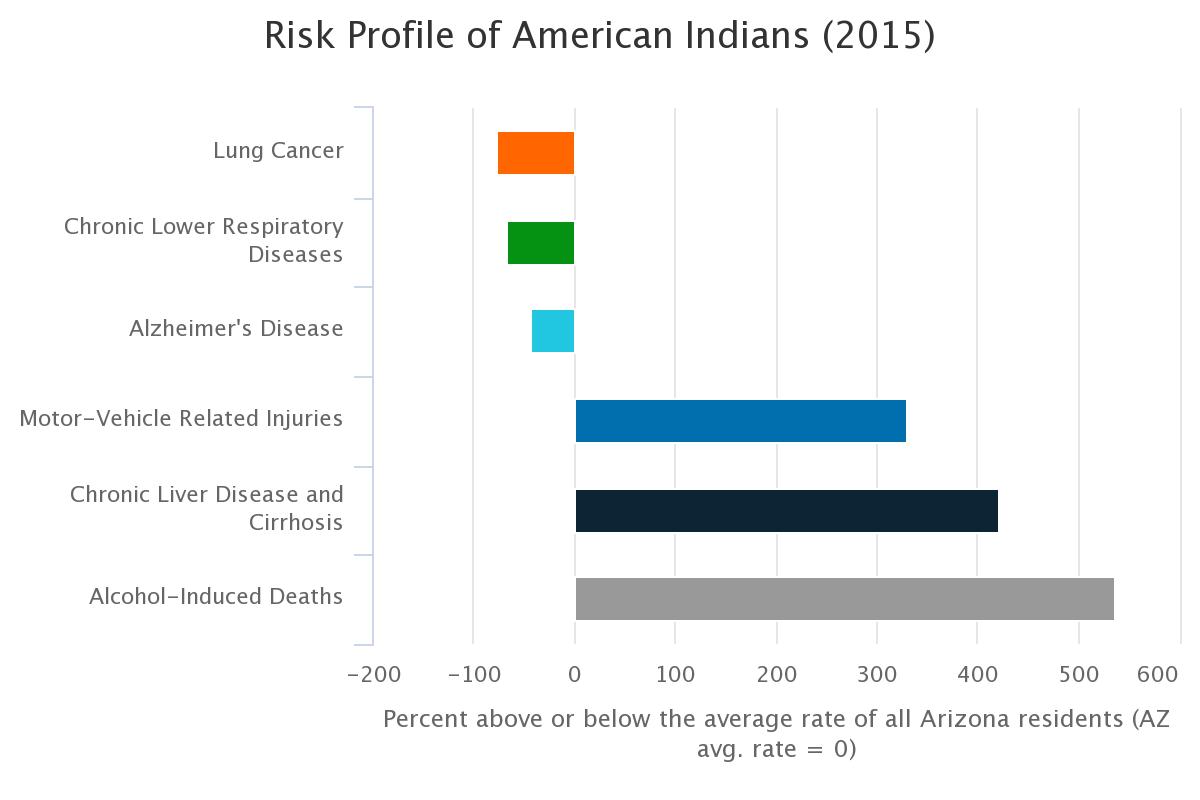
The Health Status Profile of American Indians in Arizona examines how American Indians as a group compare to the state average for select health measures. The report explores nine major categories: Teen Pregnancies, Maternal Lifestyle and Health Characteristics, Utilization of Prenatal Care Services, Newborn’s Health, Mortality from Natural Causes, Mortality from Injuries, Age-Specific Mortality, Premature Mortality, and Reportable Diseases. This article will highlight select measures from each category. It is important to keep in mind that substantial variation exists among Reservations in Arizona for many of the health measures reported. Limited data is available at the Arizona Reservation level but this article includes a section highlighting the vast differences in maternal and newborn health for select Reservations.
American Indians fared poorly when compared to the state average among many maternal and infant health measures. In 2015, American Indians reported rates above the state average in gestational diabetes, prenatal care, and preterm birth. However, tobacco use during pregnancy was lower among American Indians living in Arizona than the state average. Tobacco use during pregnancy for American Indians occurred at a rate of 3.4 per 100 births compared to the state average of 5.2 per 100 births. Figure 2 compares select maternal and infant health measures.
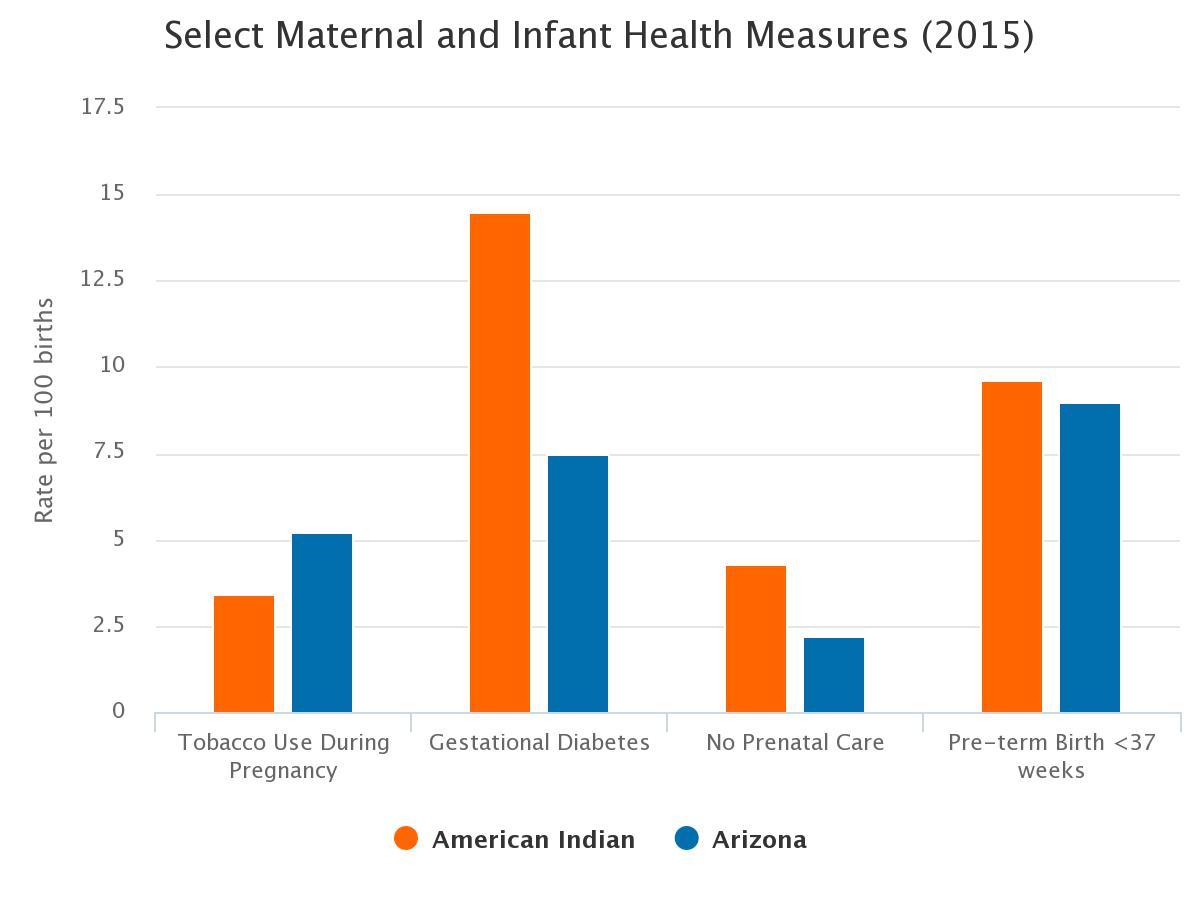
In 2015, American Indians reported a higher rate of teen pregnancies and infant mortality than the state average. The infant mortality rate among American Indians was 7.8 per 1,000 births, while the state average was 5.6 per 1,000 birth. The rate of teen pregnancies for American Indian females aged 19 years and younger was substantially higher than the state average, 26.8 compared to 15.9 pregnancies per 1,000 females. Figure 3 illustrates the rate of teen pregnancies and infant mortality.
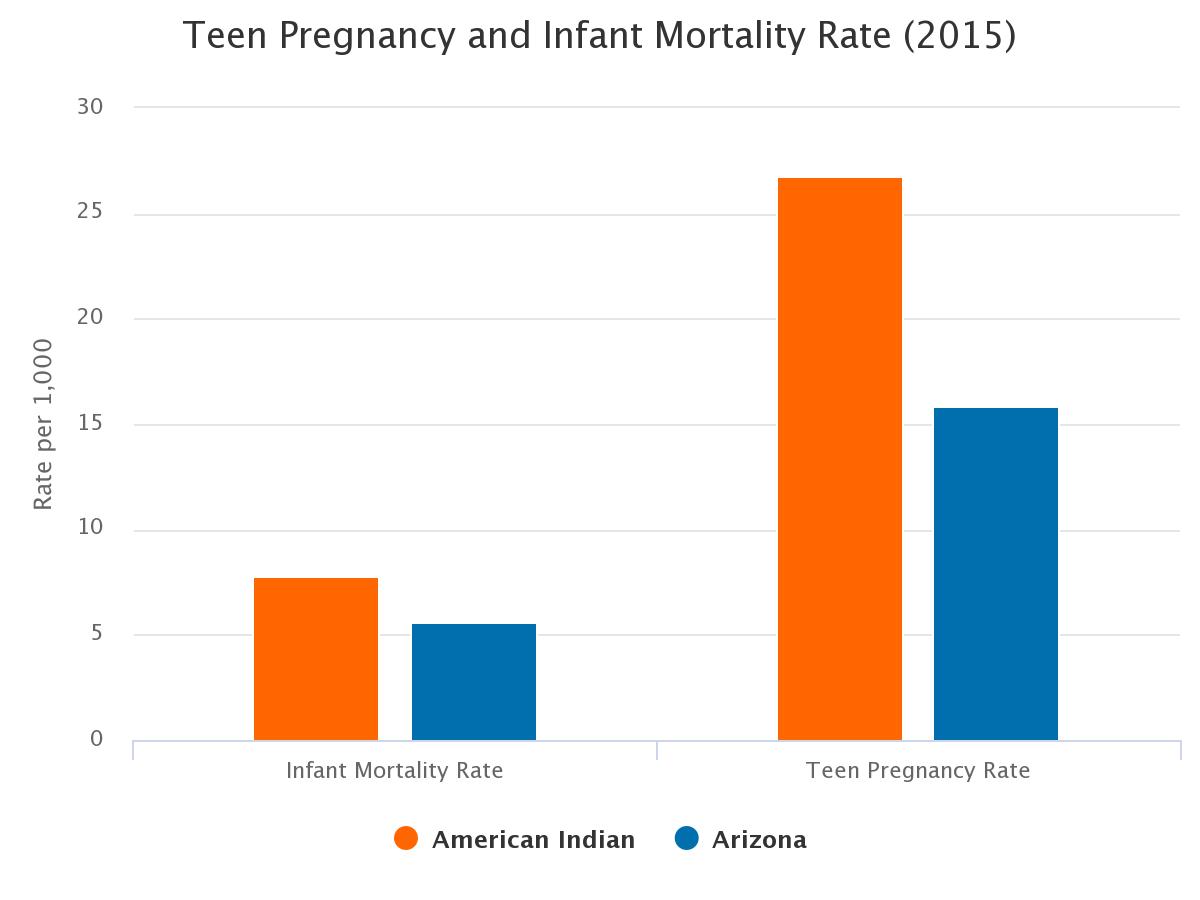
Maternal and infant health measures vary significantly among Reservations in Arizona. Of the data reported in the Health Status Profile of American Indians in Arizona report, the San Carlos Apache Tribe had the lowest recorded incident of gestational diabetes but the highest rates of preterm birth and no prenatal care in 2015. The low rate of gestational diabetes among the San Carlos Apache Tribe may be due to the high percentage (16.4%) of woman who did not receive prenatal care during their pregnancy. The Navajo Nation reported the lowest percentage of preterm births and women not receiving prenatal care at 6.9% and 1.5% respectively. The Tohono O’Odham Nation also reported a low percentage of preterm births at 7.9%. On the other hand, the Salt River Pima-Maricopa Indian Community reported that more than 11% of woman received no prenatal care, 17.2% of babies were born preterm, and 17.2% of pregnant mothers had gestational diabetes. The Hopi Tribe reported the highest incident of gestational diabetes at 17.8%. Data for select Arizona Reservations on maternal and newborn health is highlighted in Figure 4.
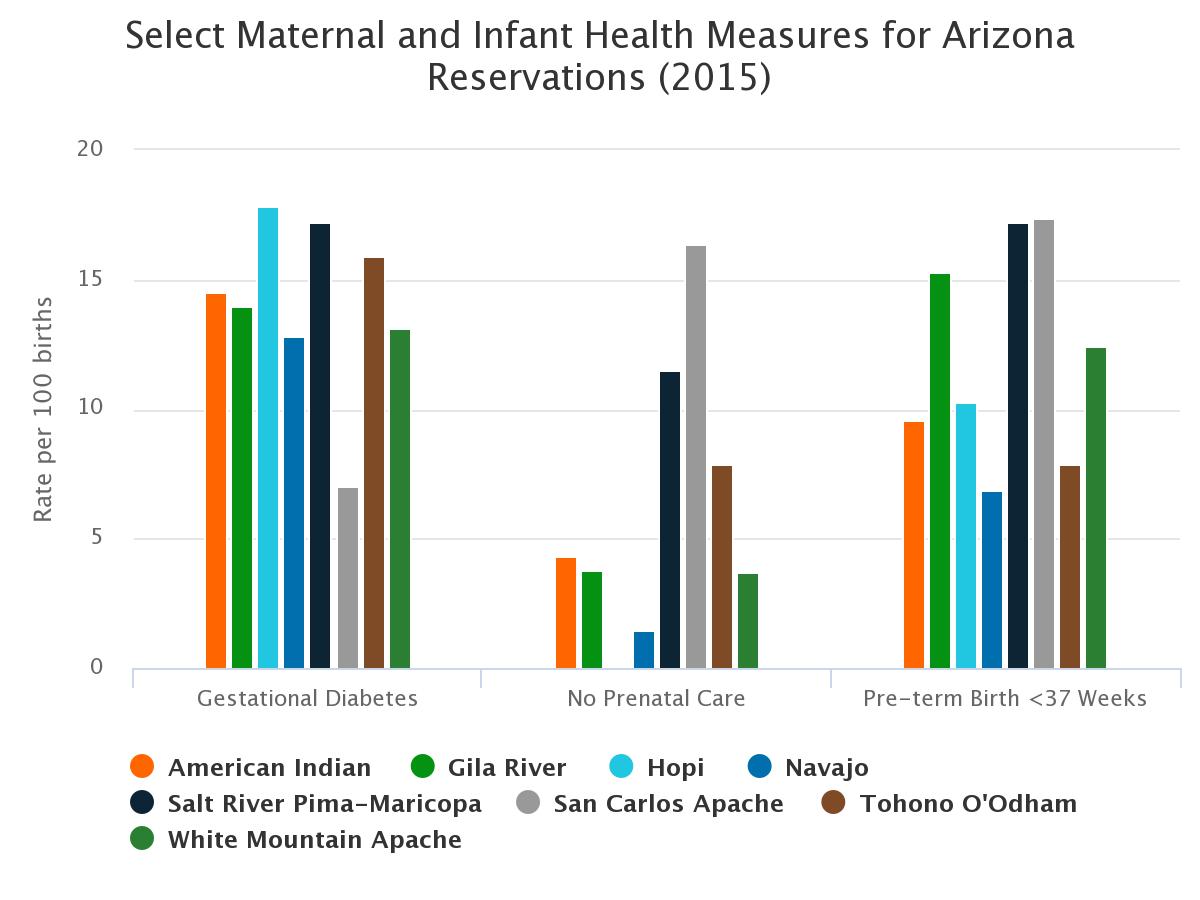
Mortality from natural causes includes health indicators such as lung cancer, diabetes, and cardiovascular disease. American Indians living in Arizona reported rates significantly below the state average in many of these measures. For example, American Indians reported a lung cancer rate of 8.1 per 100,000 people while the state average was 35.1 per 100,000. Additionally, American Indians reported lower rates of cardiovascular disease and Alzheimer’s. In contrast, American Indians reported a higher incident of diabetes in 2015 compared to the statewide average. Figure 5 highlights mortality rates for select natural causes.
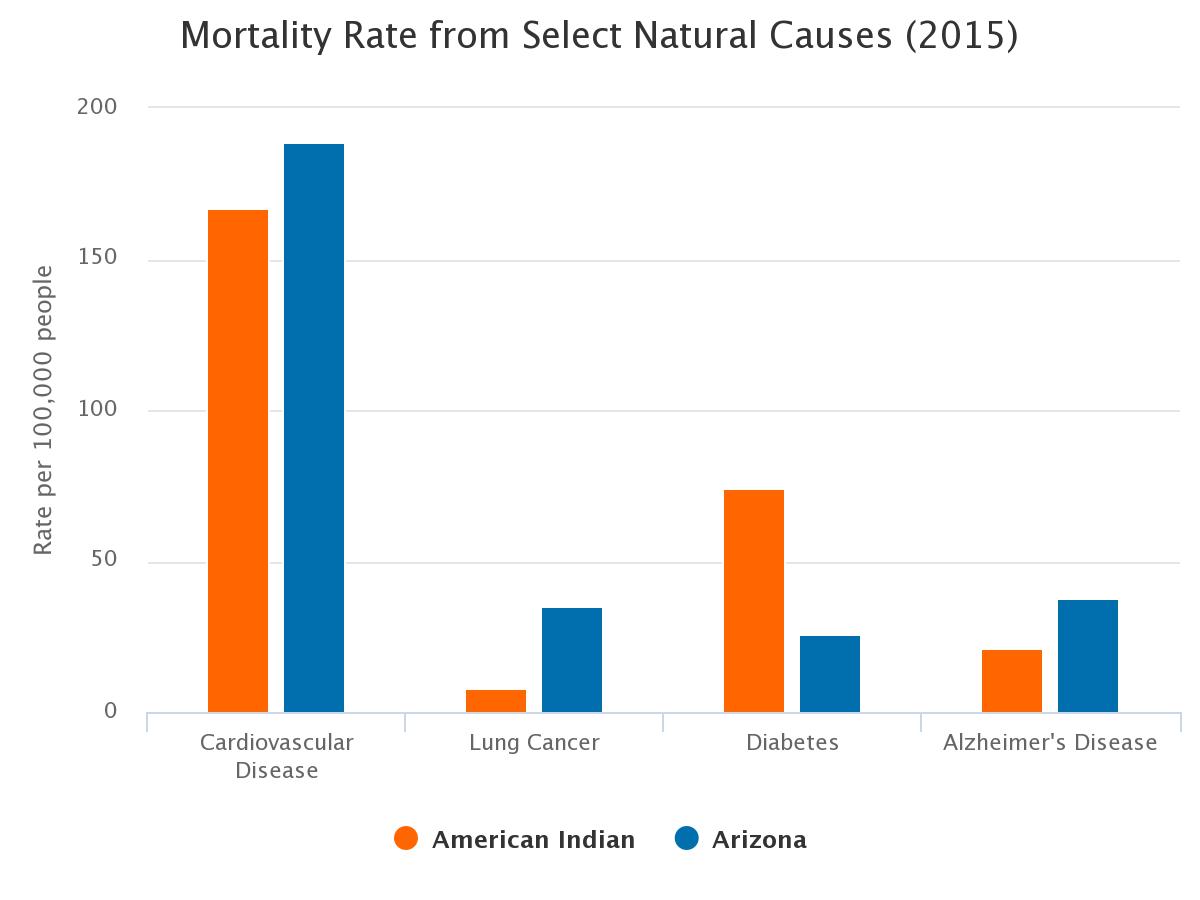
The Health Status Profile of American Indians measures several indicators of premature mortality from injuries. Of those measures, American Indians reported a high rate of premature mortality from motor vehicle accidents and alcohol use. The rate of mortality for American Indians from a motor vehicle accident was nearly five times the statewide average, while death from alcohol use was nearly 10 times the state average. The rate of premature mortality from drug-use was lower among American Indians when compared to the state average, while the suicide rate was about equal. Figure 6 compares the premature mortality rates of American Indians for select indicators.
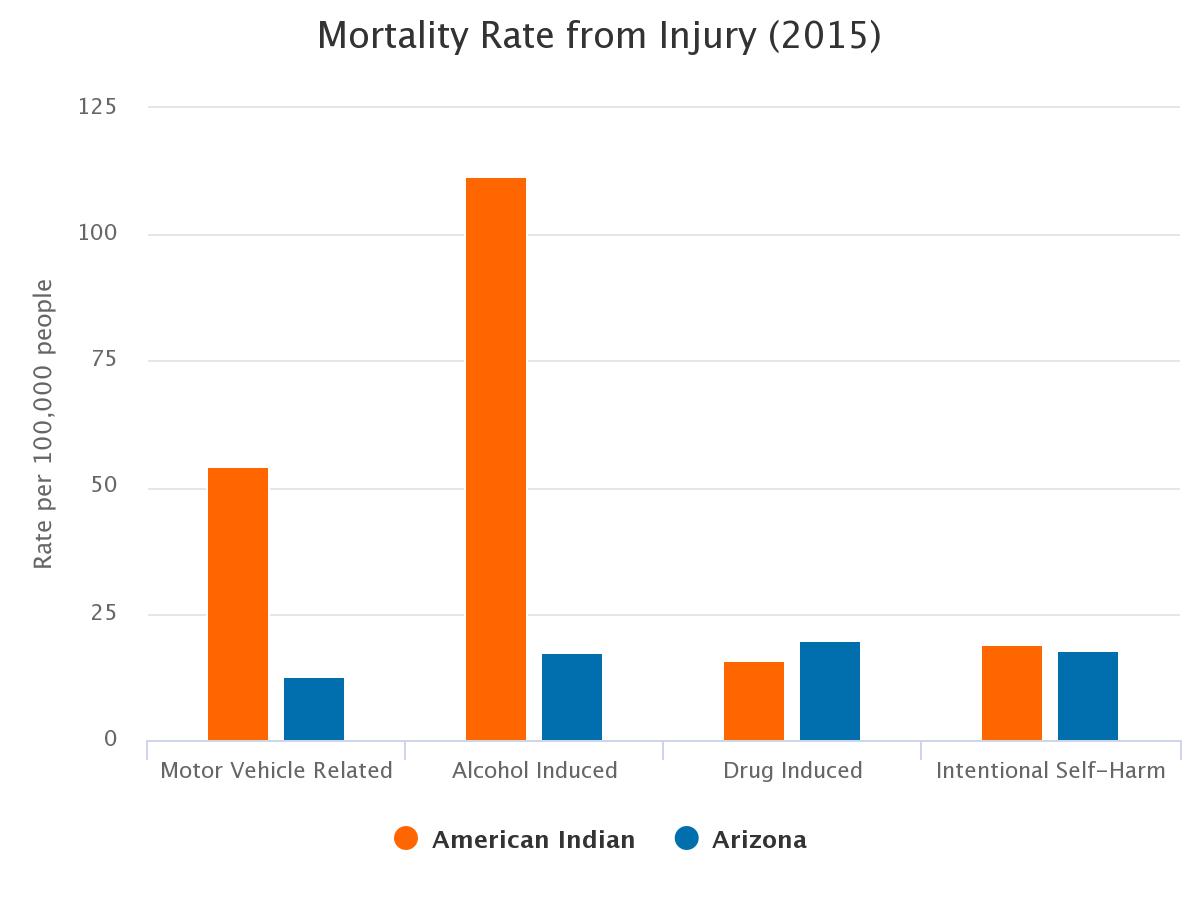
The median age for American Indians and all Arizonans has remained consistent over the past 10 years. In 2015, the average Arizonan had a life expectancy of 76 years. During that same year, the average life expectancy of an American Indian living in Arizona was 60. That is a large difference. On a positive note, during that same 10-year period the number of births to teenage American Indian mothers has decreased by over 40%.
To learn more about the trends and to review other health indicators for American Indians visit The Health Status Profile of American Indians in Arizona Report.













